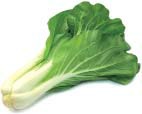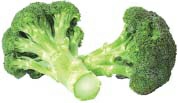The Healthy Green Drink Diet (4 page)
Read The Healthy Green Drink Diet Online
Authors: Jason Manheim

consume a wide variety of greens. It ensures our bodies receive ample amounts of one nutrient and
doesn’t overdo it on another, all the while keeping our taste buds from shorting out due to boredom. A
great way of achieving this is to eat with the seasons; if it’s not available, don’t eat it until it is.
experiment, mix it up, try new things… it’s good for you!
The following list consists of the main leafy greens used throughout this book and in my very own kitchen.
You will find a brief table listing the nutrient contents for each green and a short description outlining the
major nutritional benefits, flavor profiles, and ways of incorporating them into your own green drinks and
smoothies.
Arugula (Rocket)
2 cups (40 g), raw
1.03 g protein
.6 g fiber
64 mg calcium
.58 mg iron
148mg potassium
11 mg sodium
949 IU vita A
.034 mg riboflavin
.029 mg vita B6
6 mg vita C
.17 mg vita e
.043 mg vita K
This peppery, mustard-flavored dark leafy green is part of the cruciferous family of vegetables (like
broccoli, cauliflower, brussels sprouts), which makes it a potent anticancer food. It’s very aromatic, so
be careful what you mix it with as it can easily dominate the flavor of your drink. To combat that effect,
you can use baby arugula because of its milder flavor. It’s so easy to grow; you can plant a few seeds in a
pot by the window and enjoy it year-round. Arugula is also a noted aphrodisiac, so don’t skimp and share,
share, share. It’s a great source of calcium; vitamins A, C, K; and potassium as well.
Basil
5 leaves (2.5 g), raw
.08 g protein
0 g fiber
4 mg calcium
.08 mg iron
7 mg potassium
0 mg sodium
132 IU vita A
.002 mg riboflavin
.004 mg vita B6



.5 mg vita C
.02 mg vita E
.01 mg vita K
One of the most common herbs used in cuisines around the world; basil is often used as a natural anti-inflammatory and an inhibitor of bacterial growth—great for those with inflammatory bowel conditions
and arthritis. I love basil. It’s another one of those fragrant, easy-to-grow, year-round pleasures. There
are over sixty varieties of basil so experiment; each one differs slightly in appearance and taste. It’s a
fantastic source of vitamin K and also includes good amounts of iron, calcium, and vitamin A.
Beet Greens
2 cups (76 g), raw
1.67 g protein
2.8 g fiber
89 mg calcium
1.95 mg iron
579 mg potassium
172 mg sodium
4808 IU vita A
.167 mg riboflavin
.081 mg vita B6
22.8 mg vita C
1.14 mg vita e
.3 mg vita K
Most people go right for the root and toss the tops. stop! They’re delicious, rich in vitamin K, folate,
magnese, and fiber. Not only that, but they taste very similar to the root, so you won’t be missing much. If
you’re growing your own beets, you can pull a few leaves off each plant while letting the root continue to
grow. The folate content is great for lowering LDL cholesterol, and the red pigment is known to raise
antioxidant enzymes in the liver. Blend the greens and juice the roots—it’s a perfect duo.
Bok Choy
2 cups chopped (140 g), raw
2.1 g protein
1.4 g fiber
147 mg calcium
1.12 mg iron
353 mg potassium
91 mg sodium
6255 IU vita A
.098 mg riboflavin
.272 mg vita B-6
63 mg vita C
.13 mg vita E
.06 mg vita K
Here’s another one of those cancer-fighting cruciferous greens. They’re very mild in flavor, and although
technically a cabbage, it’s less dense and much leafier than other cabbages, so feel free to pack them in
the blender as it won’t leave you with that chunkiness you sometimes get from solid cabbage. Full of
powerful antioxidants and beta-carotene.
Broccoli
2 cups chopped (182 g), raw (stems, leaves, and flower)



5.13 g protein
4.7 g fiber
86 mg calcium
1.33 mg iron
575 mg potassium
60 mg sodium
1134 IU vita A
.213 mg riboflavin
.319 mg vita B6
162.3 mg vita C
1.42 mg vita E
.19 mg vita K
Here we are, King Cruciferous… or cancer’s
kryptonite
, as I like to call it. Think of a malady, any
malady, and I’m willing to bet the health benefits of broccoli have been known to combat it. Things like
diabetes, Alzheimer’s, stomach, breast, lung and colon cancer, heart disease, arthritis, and more. You can
even eat the stems, just make sure to peel away the harder parts. It’s overflowing with vitamins C, K, and
A, folate, and fiber. You can also try broccoli rabe, which is a bitter-tasting brother to broccoli.
Cabbage
2 cups chopped (178 g), raw (common green variety)
2.28 g protein
4.5 g fiber
71 mg calcium
.84 mg iron
303 mg potassium
32 mg sodium
174 IU vita A
.071 mg riboflavin
.221 mg vita B6
65.1 mg vita C
.27 mg vita E
.14 mg vita K
Again with the cruciferous? Cancer doesn’t stand a chance. A great source of vitamin K and C, cabbage
comes in many different shapes and sizes. Red, green, Savoy (curly), Napa (or Chinese cabbage), even
brussels sprouts and bok choy are types of cabbage. In the Middle Ages, this humble leaf ball was known
as the “drug of the poor” because it was cheap, and a diet rich in it cured most ailments. Cabbage juice
has been quite effective at preventing and curing stomach ulcers because of its fantastic anti-inflammatory
properties.
Celery
2 medium stalks (80 g), raw
.55 g protein
1.3 g fiber
32 mg calcium
.16 mg iron
208 mg potassium
64 mg sodium
359 IU vita A
.046 mg riboflavin
.059 mg vita B6
2.5 mg vita C
.22 mg vita E
.023 mg vita K

